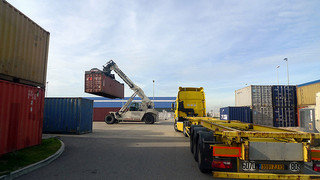 The fight for more market share on the Asia-Northern Europe trade lane has ocean carriers making erratic freight rate adjustments over the last couple of months despite profitability remaining poor to non-existent for most, said maritime research group Drewry.
The fight for more market share on the Asia-Northern Europe trade lane has ocean carriers making erratic freight rate adjustments over the last couple of months despite profitability remaining poor to non-existent for most, said maritime research group Drewry.
“Freight rates have fallen even when average vessel utilization has been above a healthy 90 percent,” noted Drewry.
It observed that freight rates from the westbound Asia to Northern Europe lane have been dramatically rising and falling, as ocean carriers seem to no longer apply the normal laws of supply and demand to their operations.
It further speculated that ocean carriers seem to be lukewarm in implementing announced general rate increases (GRIs) needed to improve profitability because of a desire to increase or protect market share.
According to the World Container Index, much of the 109 percent increase in rates from Shanghai to Rotterdam between the end of October and beginning of November, up to $2,687 per 40-foot container, was already lost by the end of the month.
In fact, the average reached just $2,147 per 40-foot on November 28, prompting the announcement of yet another major GRI on December 15, said Drewry.
This was followed by a further reduction of $143 per 40-foot during the first week of December, taking the average down to $2,000 per 40-foot, 56 percent above where it started at the end of October.
“The jury is still out on the likely success of this December GRI, but if only a small part is obtained, as suggested by some industry sources, ocean carriers will still be much better off than at the end of October, when average rates of less than $1,300 per 40-foot were being quoted for spot cargo,” said Drewry.
But westbound contract re-negotiations do not seem to be going well for ocean carriers, as current rate levels are reportedly well below this year’s average of about $1,800 per 40-foot, which does not auger well for their profitability next year.
“Improvement or maintenance of market share is said to be the main driver, and the price being paid appears suicidal,” added Drewry.
Eastbound freight rates from Rotterdam back to Shanghai also fell sharply in November. According to the World Container Index, the cumulative decline reached 15 percent, taking the average at the end of the month down to just $755 per 40-foot unit.
This was followed by another $21 per 40-foot reduction in the first week of December, taking the average down to $734 per 40-foot.
The fall seems inexplicable as eastbound cargo has been increasing, with year-on-year growth still reaching 11 percent in the third quarter.
“The inference is that the ocean carriers have been carrying their fight-to-the-death over market share in the westbound trade lane to the eastbound route,” said Drewry.
Photo: jean-louis zimmermann




